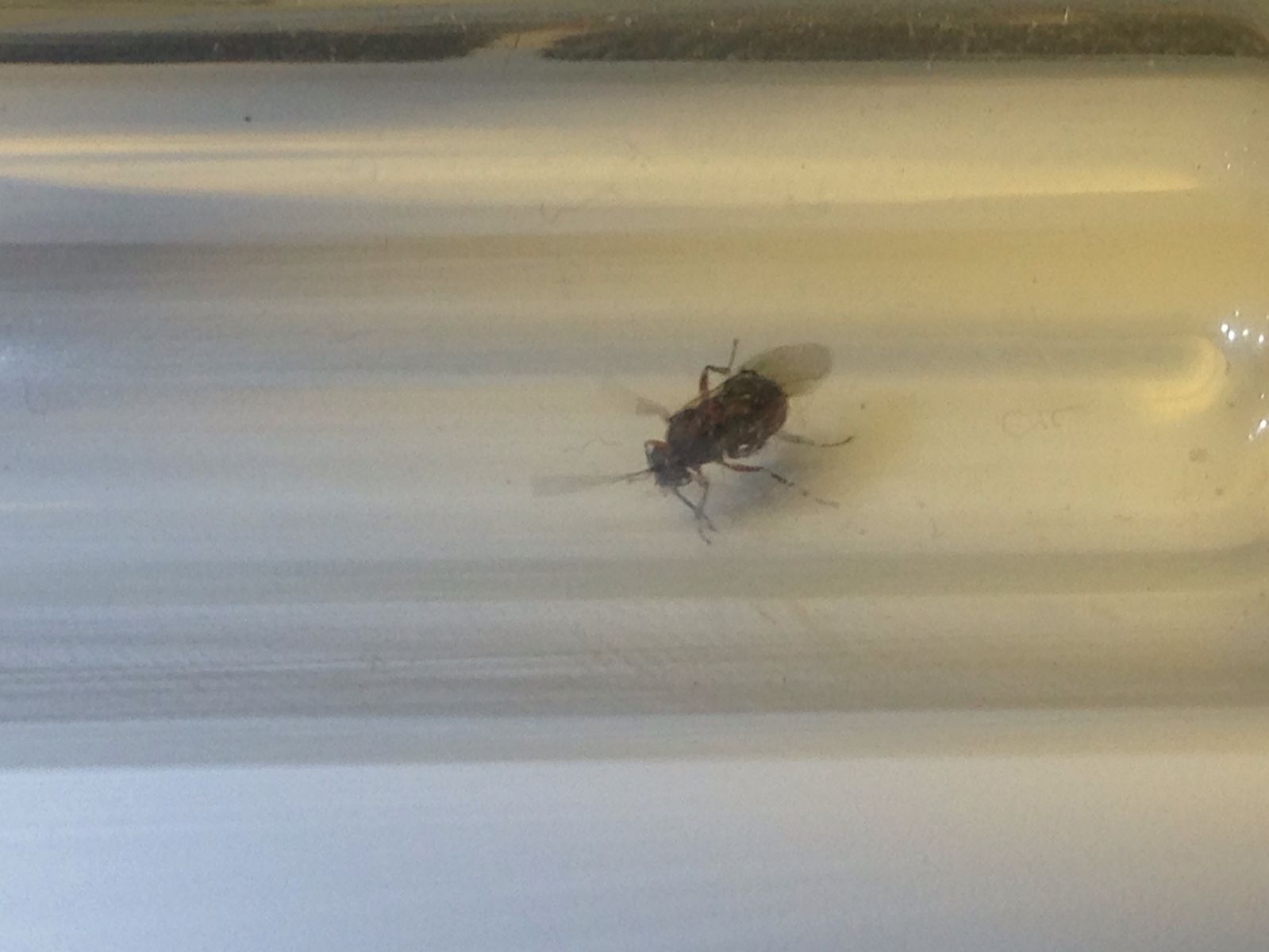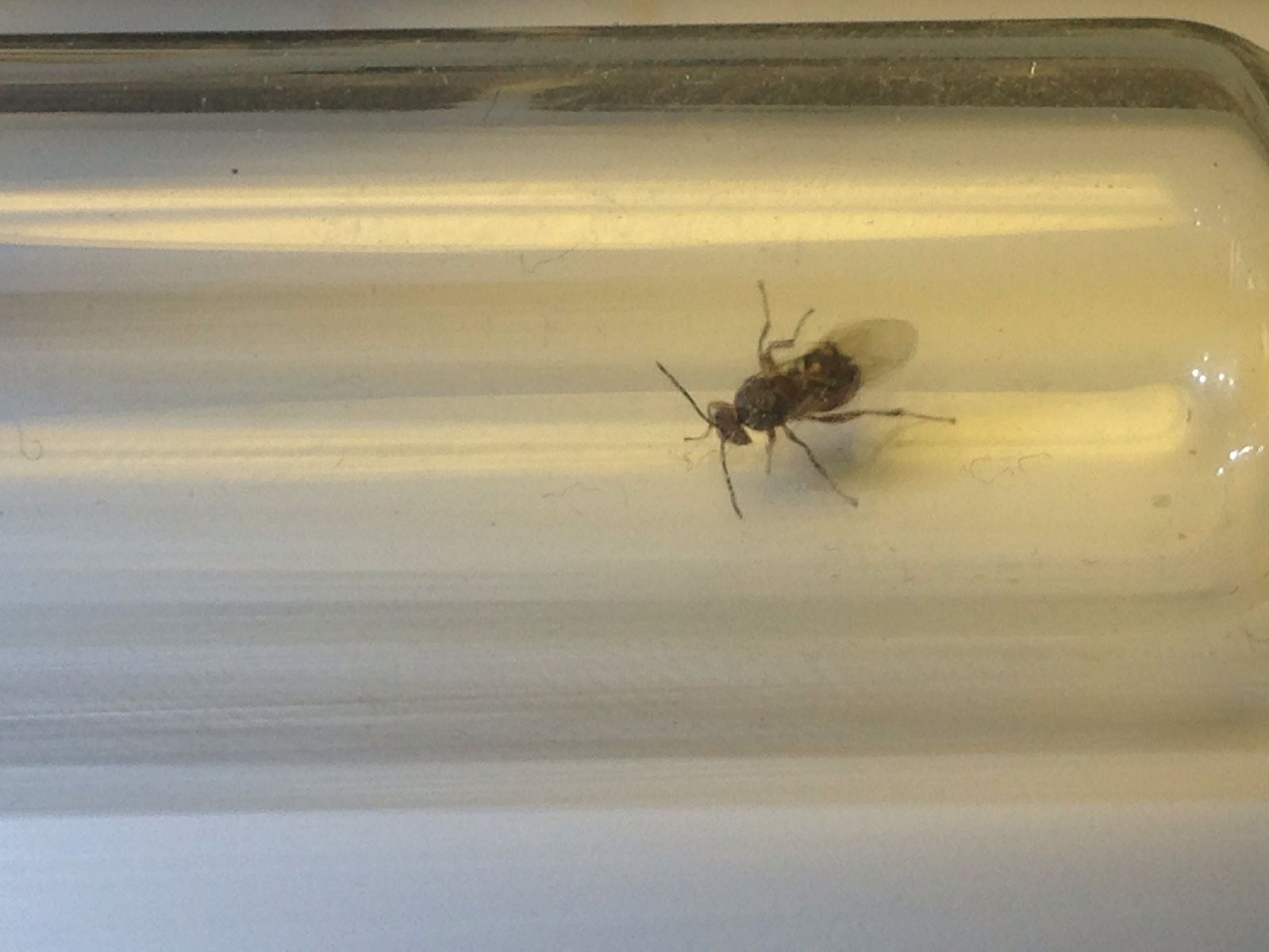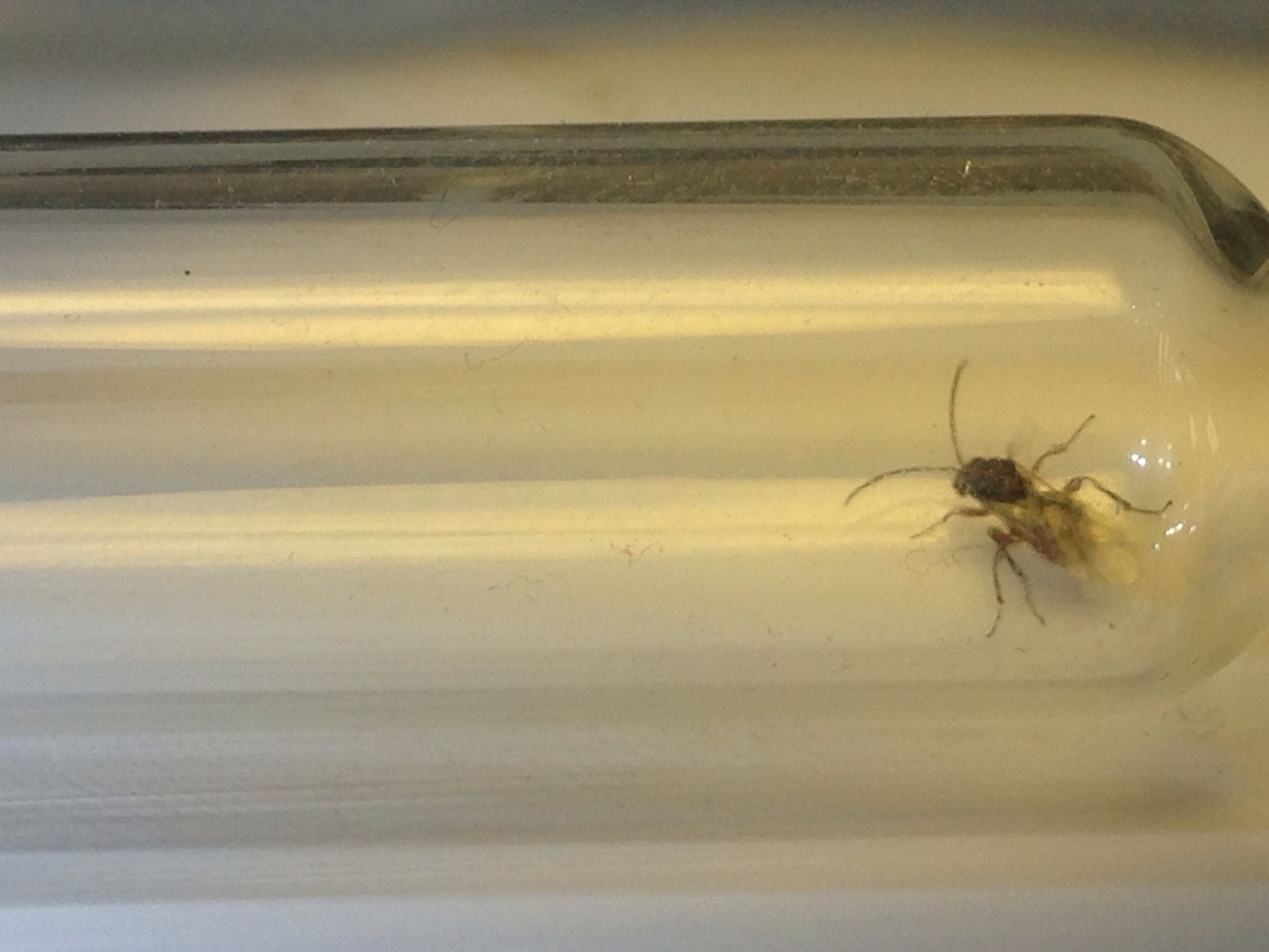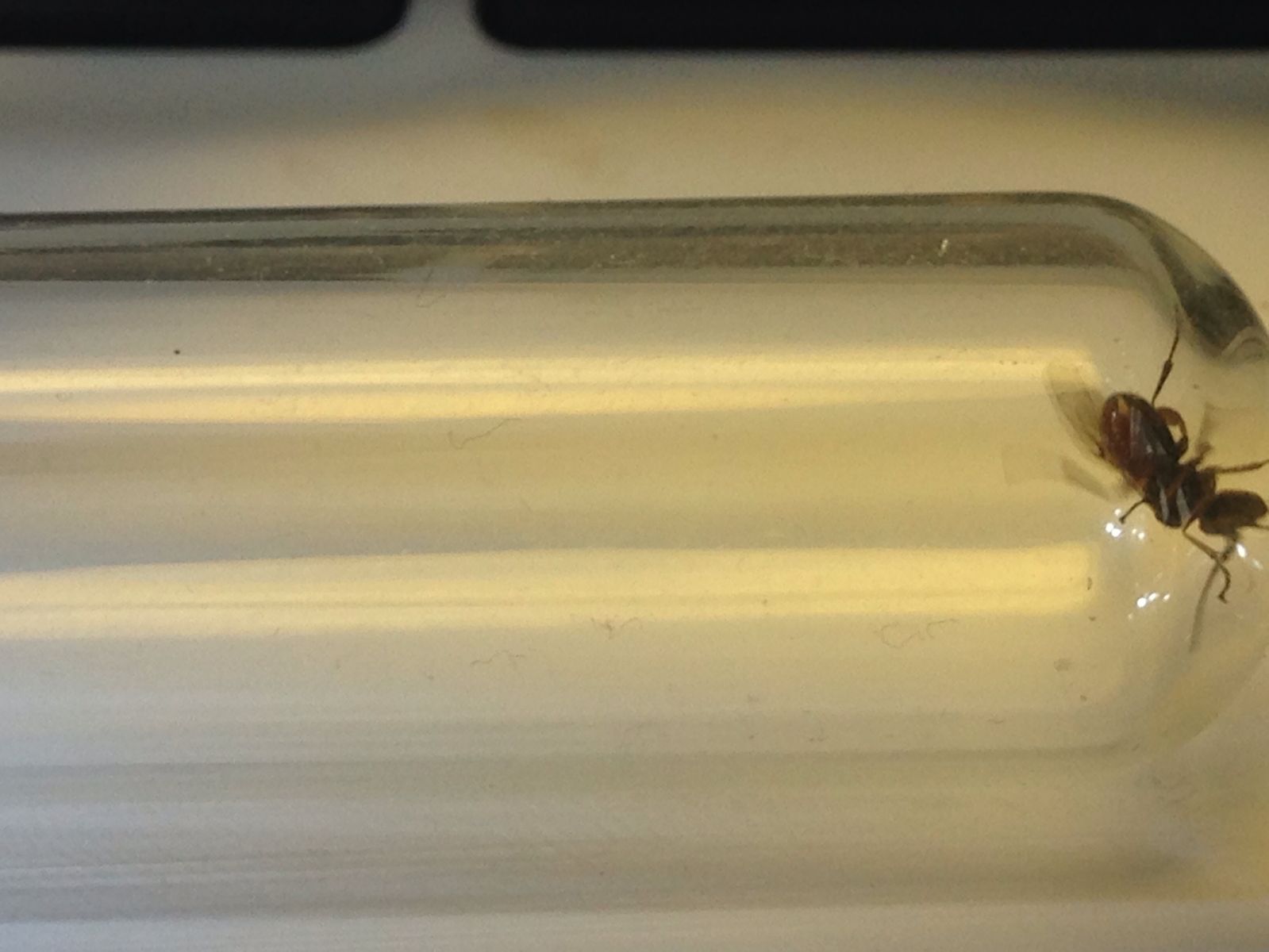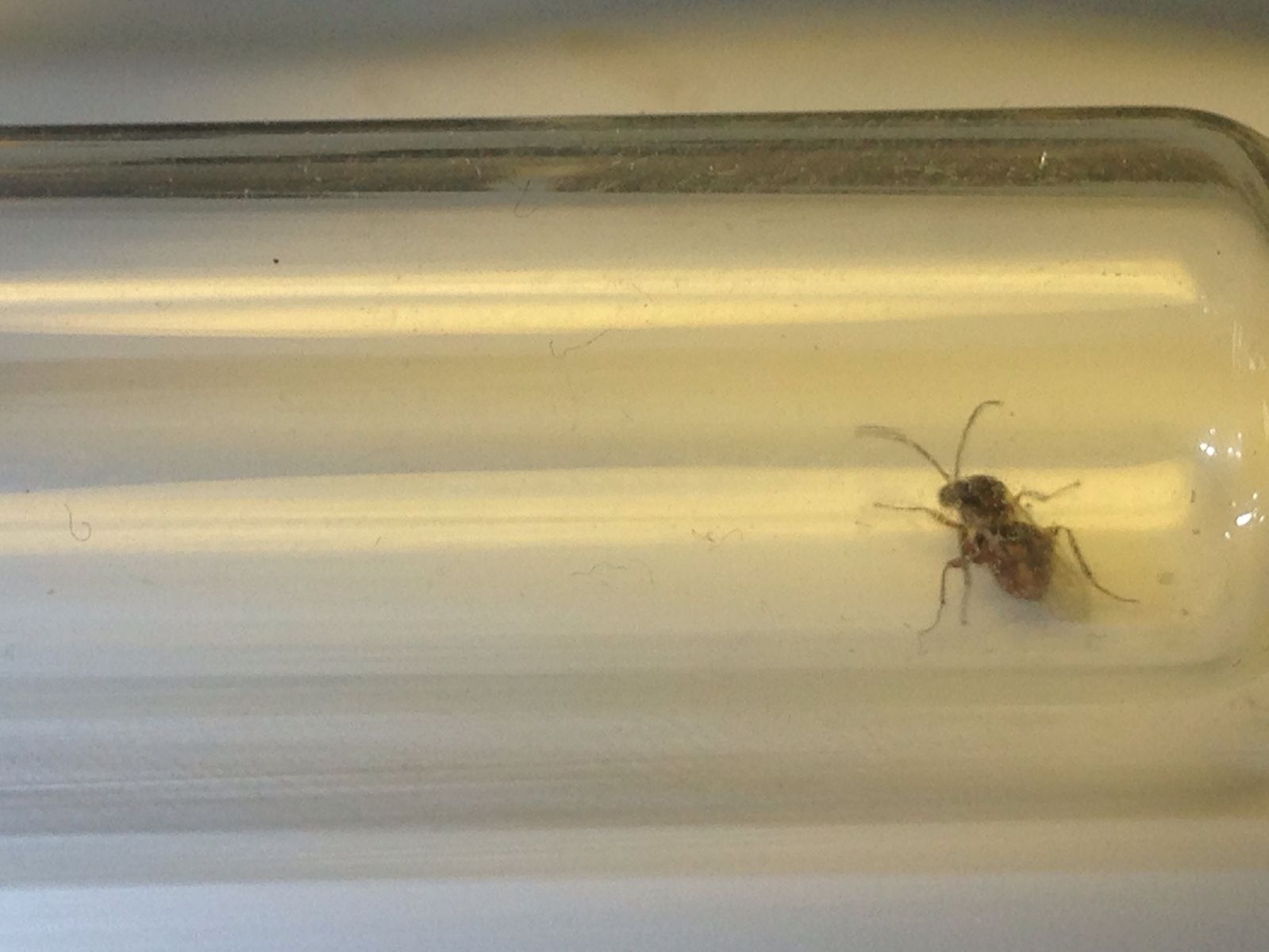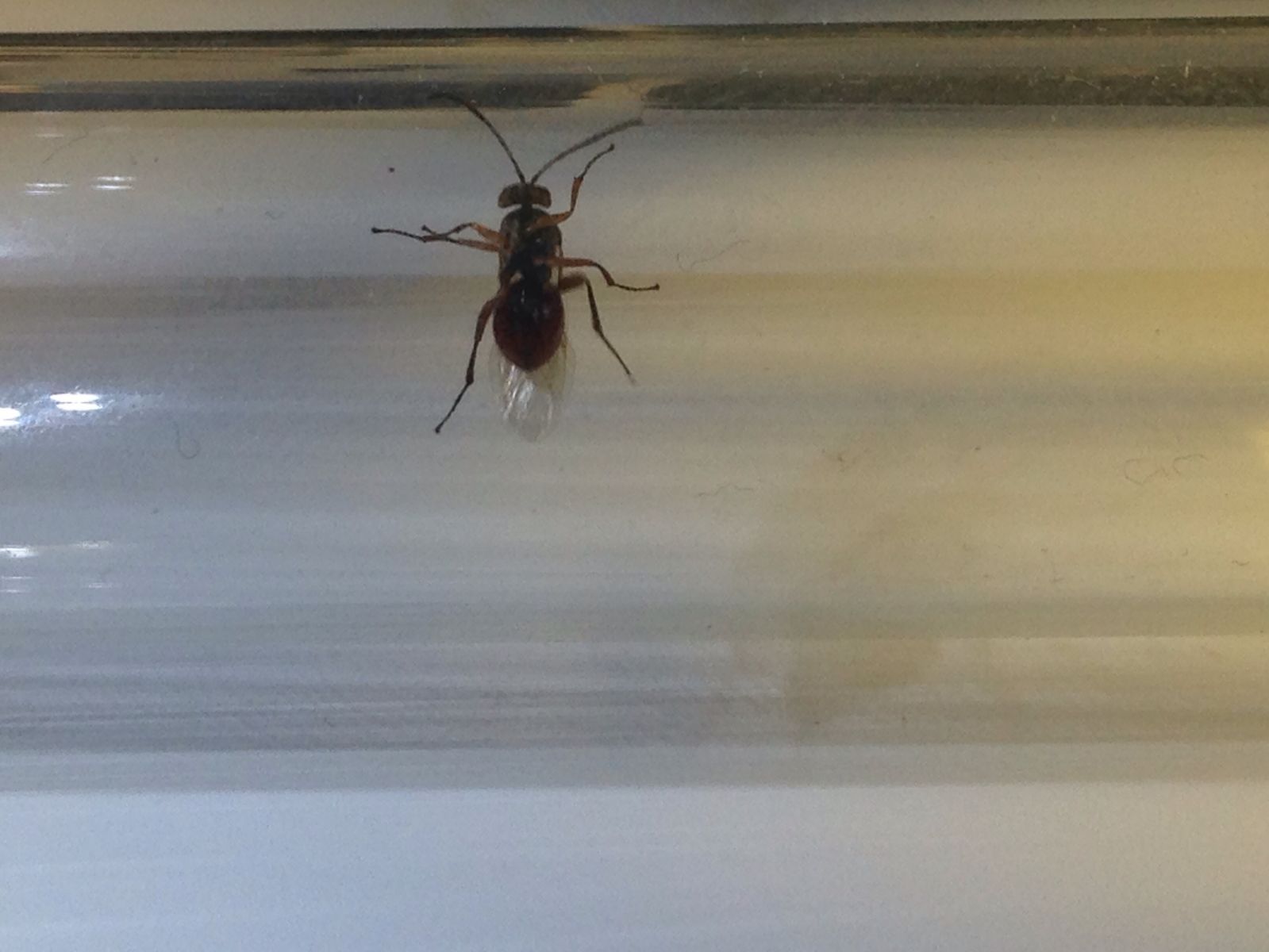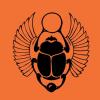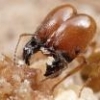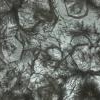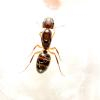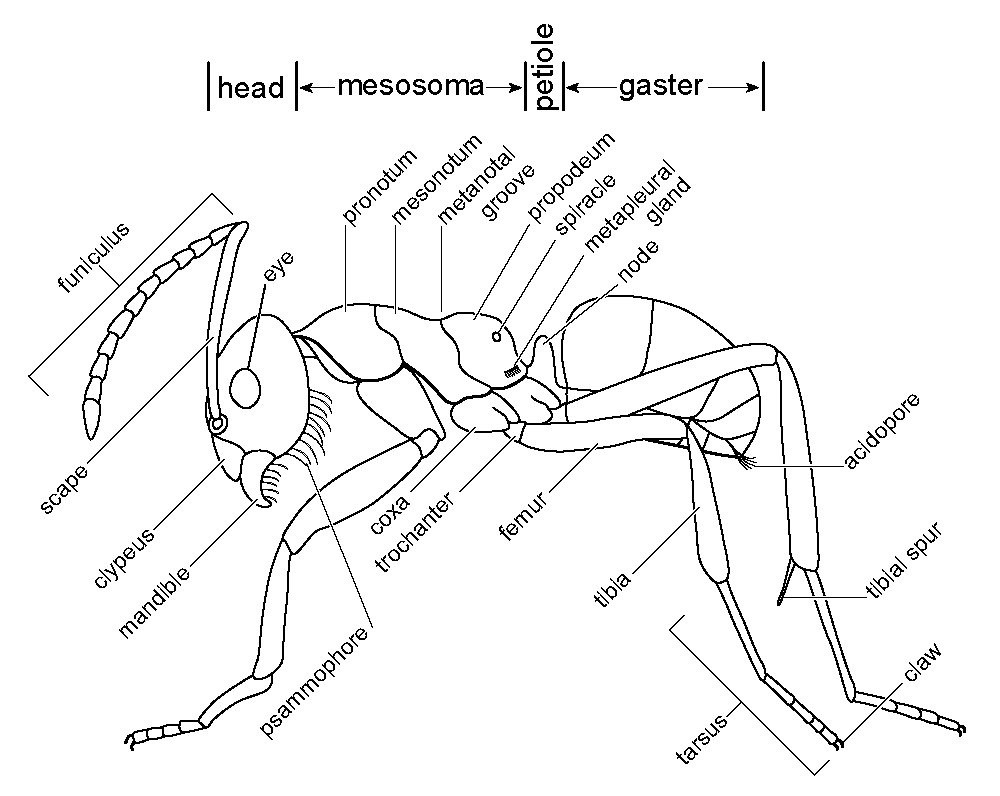Hi guys!
So I caught this guy while out looking for Camponotus. queens this early this afternoon. I was certain at first sighting it was a queen, but upon closer inspection I am not sure what it is, if even an ant at all! I would greatly appreciate any feedback on ID-ing this crazy rascal. Sorry for the poor quality photos, this guy would not stop spiraling around the test tube like a roller coaster. ![]() I'm also a newbie, and this is my 1st anting season. I am still getting used to identifying queens and such.
I'm also a newbie, and this is my 1st anting season. I am still getting used to identifying queens and such.
1.) caught in Wells, Maine along a service road bordering some woodlands.
2.) 4/27/17-date caught
3.) pine forest
4.) 2.5 mm, couldn't get an accurate length with its activity level but about 2/3rds of the size of my Lasius Umbratus queens I've been catching
5.) dark brown head, & thorax, bright orangish-red gaster... transluscent wings,shiny gaster
6.) Prominent thorax as wide as head segment, large spherical shaped gaster
7.) Crazily energetic; doing loopy-loops in the test tube. Also seems to have a somewhat small head section, which almost made me think it could be a drone along with mandibles that are hard to distinguish.
8.) Found scurrying along pavement
